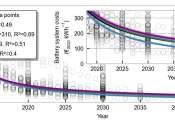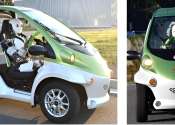Rapidly declining costs of batteries and fuel cells could soon facilitate the electrification of heavy-duty vehicles
The electrification of road vehicles has already begun, with most automotive companies now investing in hybrid and electric cars. While these efforts could contribute to reducing carbon emissions worldwide, they have so far ...









